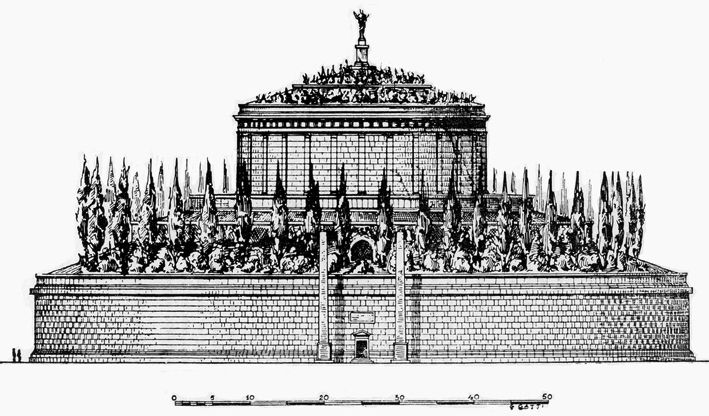The Mausoleum of Augustus, or the "Mausoleum Augustum" in Latin, was built during Emperor Augustus' reign with the intent to house his family once they passed away. It was first used in 23 B.C. when Augustus' nephew, Marcellus, died prematurely. It was used constantly for two decades after its construction, and then found sporadic use on the deaths of certain later emperors. The building itself was a circular, tiered mound covered in Cyprus trees with a bronze statue of Augustus on top and two 22m red granite obelisks in front. An especially important feature was Augustus' "Thing Achieved," a list of Augustus achievements that gives historians a good look into his reign. The mausoleum was located on the Northern Campus Martius, and was made of travertine, Carrara marble, brick, and concrete. After the true purpose of the building became forgotten, it was later used as a marble workshop, a fortress, a hanging garden, a bullring, an amphitheater, and a concert hall. It was first excavated from 1907-8, and again during 1926-30, and finally excavation was finished by Mussolini in 1939. (Davies).
Sketch of building during use:
 url
url
Building today:
 url
url
-Andrew Tanner




No comments:
Post a Comment